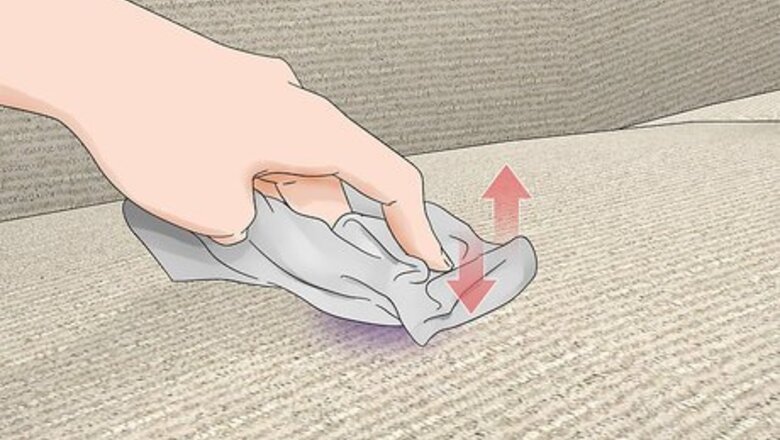
views
Using a Spot Treatment on Chenille
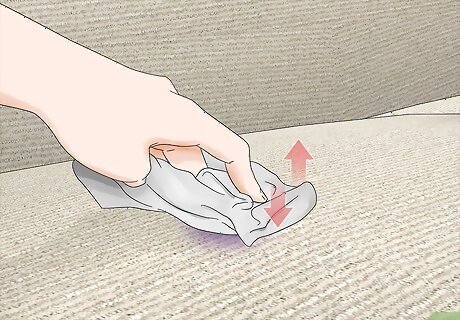
Try to clean up spills as soon as they happen to avoid stains. If you see something spill on your chenille item, use a dry paper towel or regular towel to dab it up gently and keep it from absorbing into the material. Chenille soaks up liquids fairly quickly, making it super important to dry a spill as soon as you see it. Avoid rubbing the chenille when you’re cleaning up a spill so you don’t accidentally spread the spill even more.
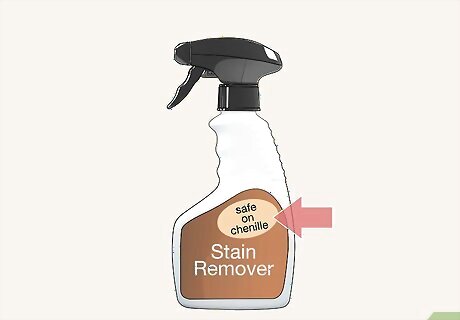
Use a spot treatment that’s labeled as safe on chenille. Visit your local big box store or home improvement store to find a cleaning product that works on delicate fabrics. To find out if it’s appropriate for chenille, look at the list of recommended fabrics on the bottle. If it’s on the list, you’re good to go! Look for a spot treatment that works on stains without bleaching your materials.
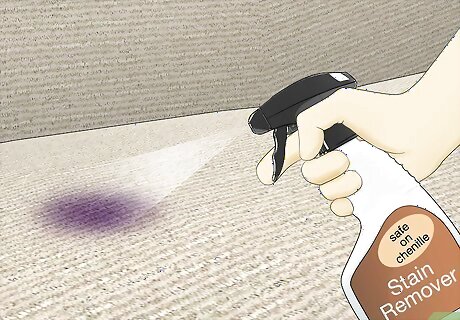
Saturate the stained area with the spot treatment according to the instructions. Dab or spray the spot treatment onto the chenille, applying enough to cover the entire stain thoroughly. Most spot treatments come in the form of a spray or pen, making it easy to apply the product directly onto the stain. Avoid adding water to the stain because this can make chenille more difficult to clean up and might damage the fabric.
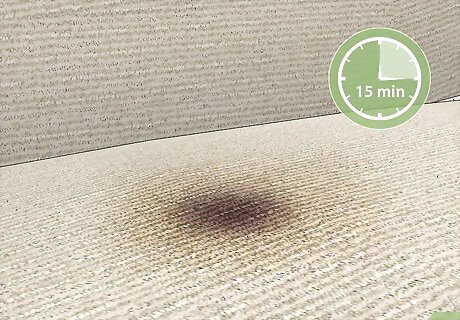
Let the spot treatment sit on the chenille to soak. The instructions that come with your specific spot treatment will tell you exactly how long to let the treatment sit, but it's usually between 5 and 15 minutes. Set a timer to help you remember when to check on the fabric. The instructions will be on the back of the bottle of spot treatment.
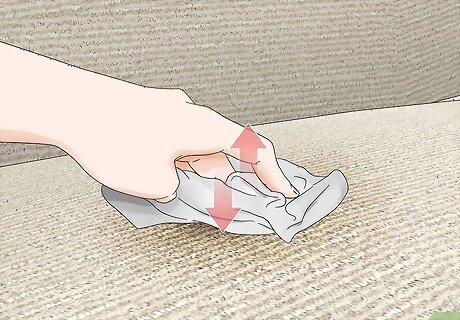
Blot the spot treatment up using a clean, dry towel. Dab the stain gently with a clean cotton or microfiber towel to soak up the excess spot treatment. Be careful not to rub too aggressively or you might damage the chenille. If the stain isn’t completely gone, apply the spot treatment to the chenille again and let it sit before repeating the drying process.
Washing Your Chenille Item by Hand
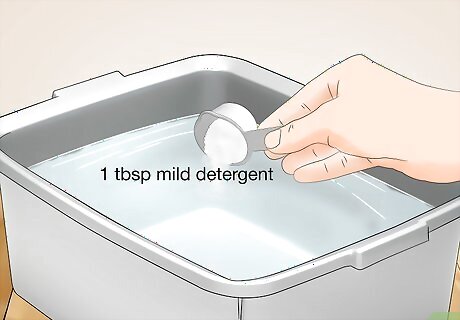
Add 1 tablespoon (15 ml) of mild detergent to a basin of water. Pick out a mild detergent that you use on clothing and delicates. Fill a basin or bucket with cool water and add the soap, mixing it gently with a spoon or your hand to create suds. Most loads of laundry only need about 1–2 tablespoons (15–30 ml) of laundry detergent.
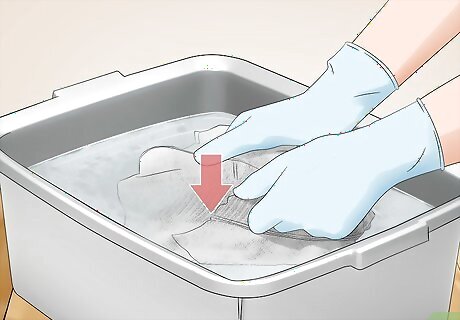
Submerge the chenille in water and move it around gently with your hand. Place your chenille item in the water and press it down using your hands. Keep gently pressing it down until it’s saturated with water, and then move the item around slowly in the water to help it get clean. Avoid rubbing the chenille so you don’t damage it. If your chenille is super dirty, consider letting it soak in the suds for 10-15 minutes.
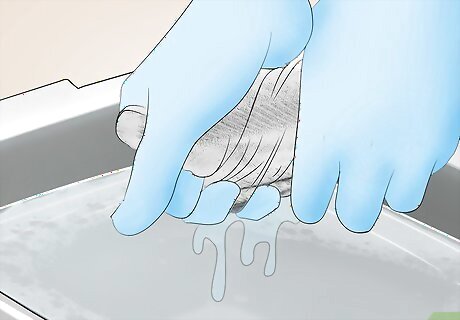
Pull the chenille out of the water and squeeze it gently. Hold the fabric in both hands and squeeze it over the bucket of water to get out the excess moisture. Avoid wringing the item out or squeezing too hard so you don’t mess up the fabric. It’s okay if you don’t get all of the water out this time. Even though you'll submerge the chenille in clean water next, squeezing the excess out now will help get rid of some of the extra soap.
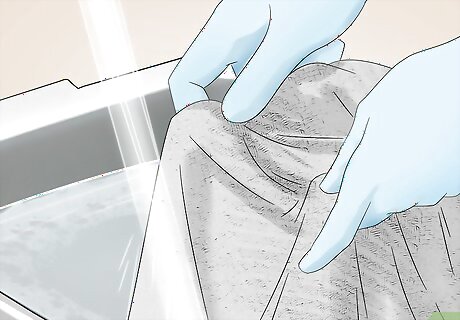
Rinse the chenille with clean water to remove the suds. Either pour out your old water and fill a bucket with new, clean water, or hold your chenille item under clean running water instead. Gently move the chenille around in the clean water, squeezing the item as you’re rinsing to help get the soap and suds out. Keep moving the chenille item around in the clean water until all of the soap is gone.
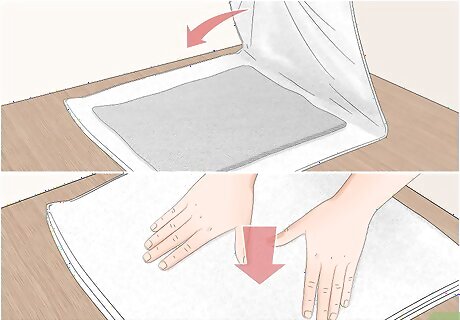
Lay the chenille out on a dry towel and press out the excess moisture. Place a clean, dry towel out on a flat surface and put the chenille item at one end of the towel. Wrap the other end of the towel overtop the item and begin gently pressing it so the towel absorbs the moisture. Keep using the towel to absorb the water in the chenille until it’s mostly dry.
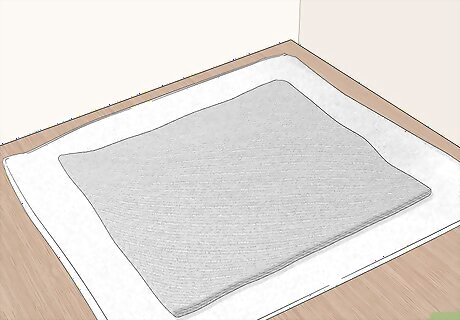
Shape the chenille item on a new towel to help it dry correctly. Place your chenille item on a different dry towel and spread it out how you’d like it to dry. Leave it on the towel to air dry for about a day before using your clean chenille item. Hanging the chenille item to dry can cause it to stretch out. This is useful for items like sweaters, shirts, pants, or other chenille that needs to be shaped so it doesn’t dry weirdly.
Putting Chenille in the Washer and Dryer
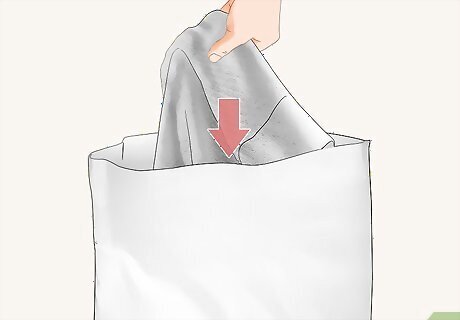
Place your chenille item in a pillowcase to protect it in the washing machine. Tie a loose knot at the top of the pillowcase to keep the chenille inside. This is a good way to help keep your item in excellent condition. Chenille fabric is known for shedding and can be easily damaged by too much friction.
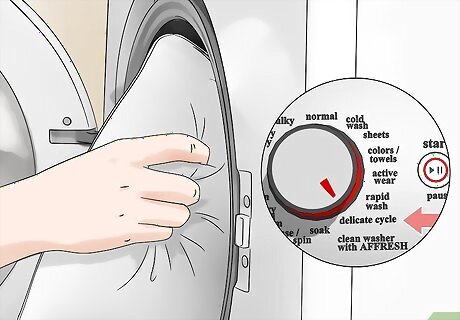
Add the item to the washing machine and use the delicate cycle only. Choose the delicate cycle so that your chenille will have a shorter run time and a gentler rinse. If your washing machine doesn’t have a delicate cycle, it’s best to hand wash your chenille. Even if you put your item in a pillowcase, it’s still best to use the delicate cycle when you wash it. Many sources don't recommend using the washing machine to wash your chenille because it can compromise the softness of the fabric.

Use a cold water setting and mild detergent so you don’t damage the fabric. Add 1 tablespoon (15 ml) of a mild liquid laundry detergent that you'd use on your delicates to the washing machine. Check to make sure the delicate cycle is on a cold water setting to protect the chenille. Hot water can cause more friction and might damage the chenille fabric.

Dry the chenille in the dryer if you have a low heat setting. If your dryer has a delicate cycle, this is the best setting to use to dry your chenille. If you don’t, make sure you put the chenille item (still in the pillowcase!) in the dryer on a low heat setting so the quality isn’t ruined. If you’re worried about putting your chenille item in the dryer, spread it out on a dry towel to air dry instead.




















Comments
0 comment